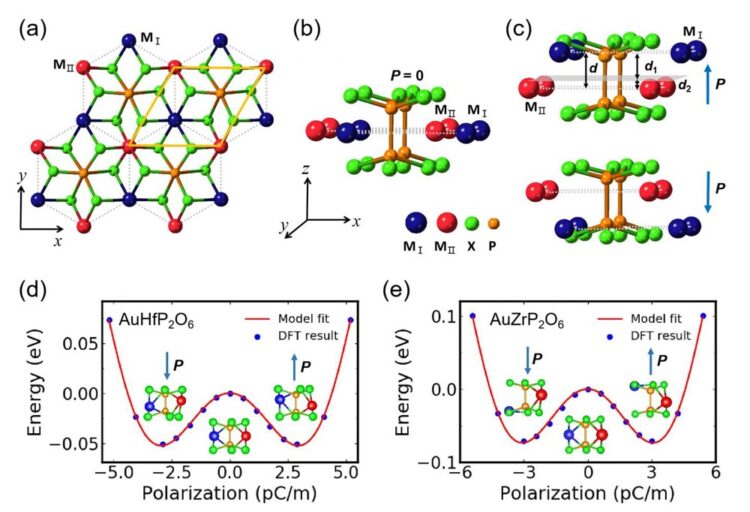Discovery of large family of two-dimensional ferroelectric metals

Schematic structures of 2D bimetal phosphates (MIMIIP2X6, MI and MII atoms are different metal elements, X=O, S, Se, Te). (a) Top view. (b) Side view of paraelectric phase. (c) Side view of ferroelectric phases with opposite polarization (P). (d)(e) Energy versus polarization of two ferroelectric metals (AuHfP2O6 and AuZrP2O6), showing the possible ferroelectric-paraelectric transition.
Credit: ©Science China Press
Media Contact
All latest news from the category: Physics and Astronomy
This area deals with the fundamental laws and building blocks of nature and how they interact, the properties and the behavior of matter, and research into space and time and their structures.
innovations-report provides in-depth reports and articles on subjects such as astrophysics, laser technologies, nuclear, quantum, particle and solid-state physics, nanotechnologies, planetary research and findings (Mars, Venus) and developments related to the Hubble Telescope.
Newest articles

Webb captures top of iconic horsehead nebula in unprecedented detail
NASA’s James Webb Space Telescope has captured the sharpest infrared images to date of a zoomed-in portion of one of the most distinctive objects in our skies, the Horsehead Nebula….

Cost-effective, high-capacity, and cyclable lithium-ion battery cathodes
Charge-recharge cycling of lithium-superrich iron oxide, a cost-effective and high-capacity cathode for new-generation lithium-ion batteries, can be greatly improved by doping with readily available mineral elements. The energy capacity and…

Novel genetic plant regeneration approach
…without the application of phytohormones. Researchers develop a novel plant regeneration approach by modulating the expression of genes that control plant cell differentiation. For ages now, plants have been the…





















